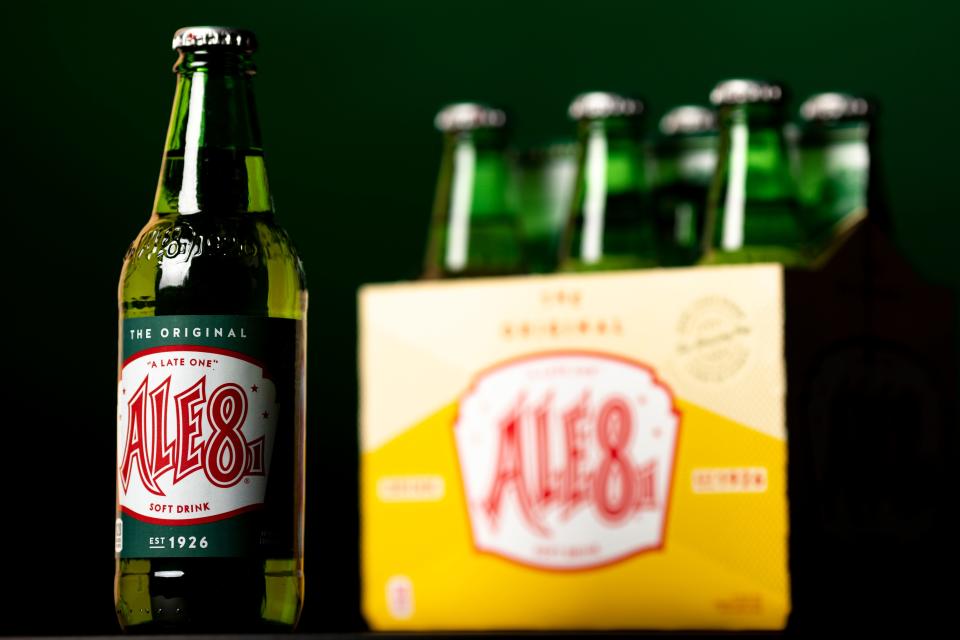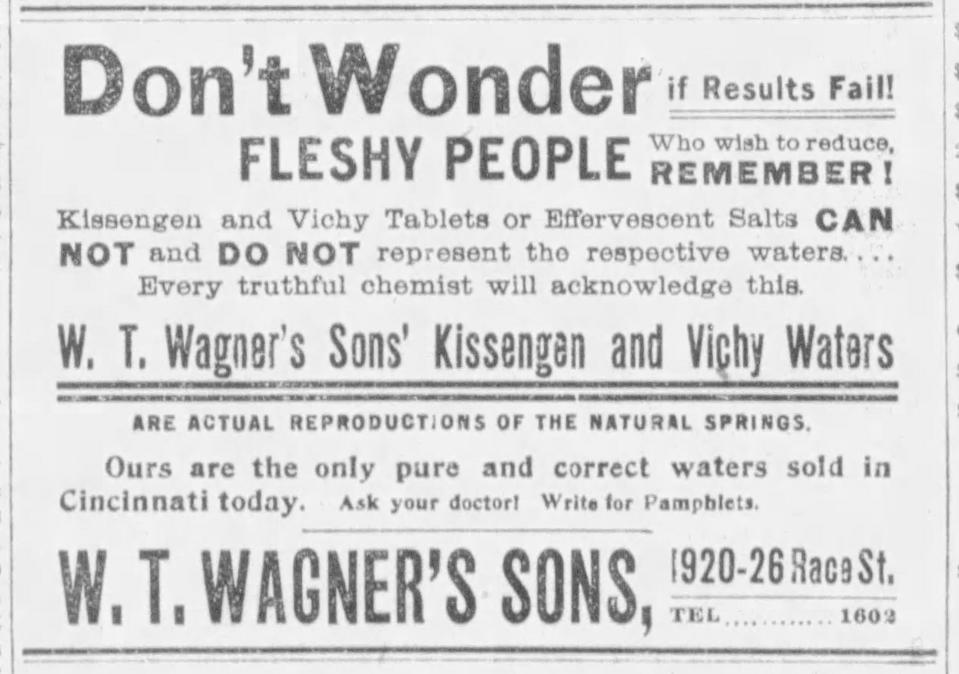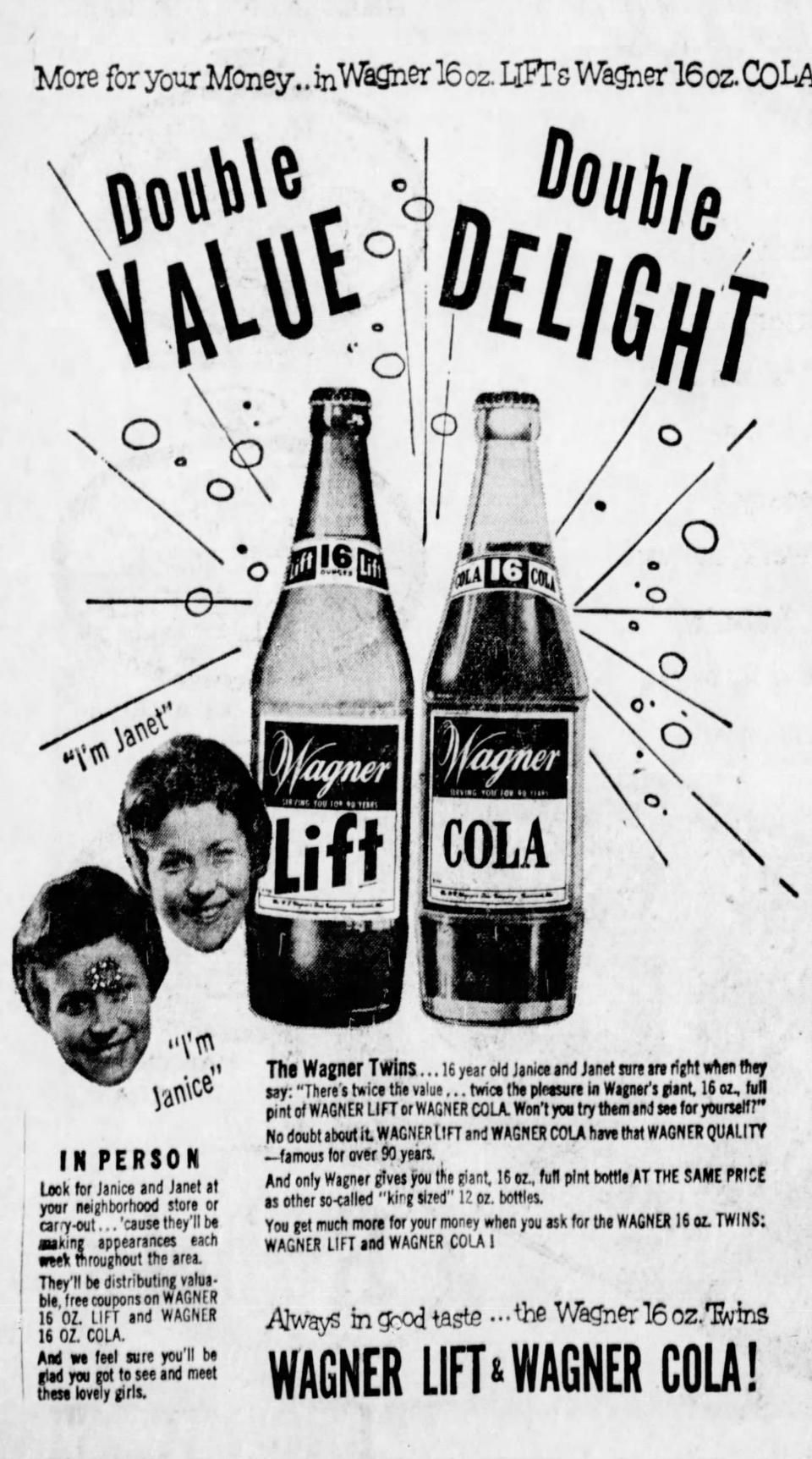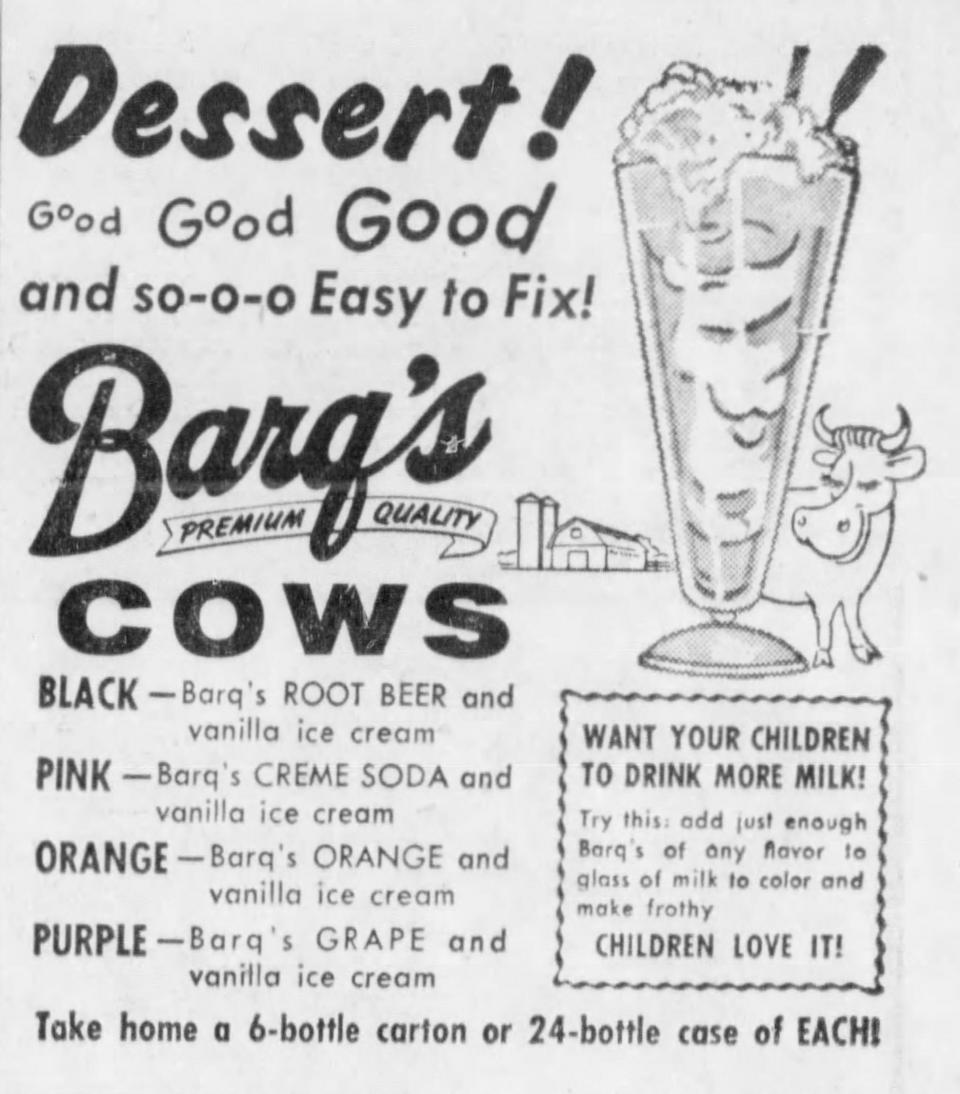Why Cincinnati is the best place to find Barq’s Red Creme Soda

- Oops!Something went wrong.Please try again later.
Cincinnati’s brewing legacy is honored today with the resurrection of the Christian Moerlein name, the wealth of new breweries cropping up and a number of historic brewery tours offered in Over-the-Rhine.
The history of another type of beverage – soft drinks – gets less recognition. Whether you call ’em soda, pop or just Coke (if you’re from the South), soft drinks have been around for 150 years, evolving from pharmacists’ elixirs to billion-dollar corporate trademarks.
Carbonated sodas grew out of non-alcoholic alternatives, tonic mixers and medical remedies (Pepsi was originally marketed as a pepsin drink to treat dyspepsia, or indigestion). The popularity of soda fountains in the back of drugstores and the growing temperance movement to ban alcohol created a soda pop market in the late 19th century.
Most soft drink brands, even Coca-Cola, began as regional sodas, many of them originating in the South after the Civil War where they had hot, humid summers.

One such soda was Ale-8-One, a ginger and citrus soft drink developed by soda bottler G.L. Wainscott in Winchester, Kentucky, in 1926. The name is a play on “A Late One,” the winning entry in a slogan contest for the new drink at the Clark County fair. Ale-8-One, now available in cherry, orange cream and diet varieties in cans and glass bottles, is still a regional favorite.
With the passage of the 18th Amendment in 1919 prohibiting the manufacture and sale of alcohol, many breweries turned to producing “near beer” (fermented malt beverages with low alcohol content), ginger ale and root beer.
In Cincinnati, Hauck’s made Green Label near beer – until home brewing became more popular. Hudepohl offered up Buckeye Ginger Ale. Crown Brewing made non-intoxicating Tang. But those were only balms as they tried to stay in business. Few breweries survived until Prohibition was repealed in 1933.
W.T. Wagner’s Sons and Vichy mineral water
Cincinnati’s most successful regional soft drink company was W.T. Wagner’s Sons, founded in 1868 by German immigrant William T. Wagner. Wagner began bottling seltzer waters in a shack at Race and Elder streets in Over-the-Rhine (before renumbering, the address was 648 Race St., now 1730 Race St., home of the Our Daily Bread soup kitchen).
When Wagner died in 1871, his eldest daughter, Sophie, ran the bottling operation and raised her three brothers until they were old enough to take over the business, according to a 1958 Cincinnati Post article.
About 1896, W.T. Wagner’s Sons Co. moved to a bottling plant at 1920-1926 Race St., a building that is now home to the reborn Rookwood Pottery.

Wagner’s popular mineral waters – with names like Minnehaha, Lithia, Kissengen and Vichy – replicated European natural spring waters. The company was known in the industry for the legal battle over the right of American bottlers to market them as the famous European waters, and the Supreme Court ruled they could if they were labeled as artificial.
The company also produced Snap Ginger Ale, several flavored mixers, Wagner Lift (“slightly sweetened, slightly lemoned club soda,” new in 1936) and Wagner Cola (introduced in 1956).
But for a number of locals, it was Vichy that hit the spot.
“Many Cincinnatians began each day with a bottle of Vichy,” Cincinnati Post columnist Richard L. Gordon wrote in tribute to the effervescent mineral water. “Some said it was ‘real good,’ and others described it as ‘horrible.’ Regardless of how it tasted, it was supposed to be good for you.”
He also cautioned, “Don’t take a big drink of Vichy thinking you’re getting a sweet soft drink. Vichy is really something else.”

Vichy replicated the natural mineral spring in Vichy, France. The ingredients include carbonated water, bicarbonate, citrates, chlorides and sulfates of sodium, potassium and magnesium. It was meant to refresh you as it replaced salts lost to perspiration.
Gordon added, “Evidently a good deal of Vichy was drunk to combat hangovers, and some people theorize it was taken not so much for its curative powers, but as a kind of penance.”
Edward Wagner III, the fourth generation of the family to lead the company, sold Wagner’s to Vernor’s Ginger Ale Co. of Detroit in 1960. At the time, Wagner’s was the oldest soft drink maker in the country, in business for 92 years.
The Vernor-Wagner Corp. subsidiary was then sold to Detroit investors and moved to Golf Manor, but finally closed in 1968. The Wagner line was discontinued, although Vichy water was bottled by Canada Dry for a while, then Barq’s, before it, too, disappeared.
Pink Cows and Barq’s Red Creme Soda
Speaking of Barq’s … Remember the pink cow? That’s an ice cream float made with a scoop of vanilla and Barq’s Red Creme Soda. The pink confection was demonstrated by Captain Windy during Barq’s advertising segments on “The Uncle Al Show” on WCPO 9 (WCPO-TV).

Barq’s is best known for its root beer, but it was the Cincinnati franchise that introduced the red pop.
The Barq’s Brothers Bottling Co., bottlers of carbonated soda, was founded by chemist Edward Charles Edmond Barq Sr. and his brother, Gaston, in the French Quarter of New Orleans in 1890. Its most popular soda, the orange-flavored Orangine, won a gold medal at the 1893 Chicago World’s Fair.
After Gaston died, Edward moved to Biloxi, Mississippi, in 1897 and opened the Biloxi Artesian Bottling Works. There he developed Barq’s signature root beer around 1898. It wasn’t called root beer right away for fear of litigation from Hires Root Beer. The label just said Barq’s with the slogan, “It’s Good.”
As Barq’s became a hit in the South, the company expanded to 62 bottling plants across the country. One of those Barq Bottling Co. franchises was started in Cincinnati in 1937 by three partners, Albert W. Badanes, Richard S. Tuttle and Hugh G. Carmichael, who leased a Coca-Cola bottling plant at 520 E. Fifth St., Downtown.
One day at the Cincinnati plant, Tuttle added red dye to Barq’s amber-colored creme soda, according to Tuttle’s 2000 obituary in The Enquirer. The taste didn’t change, but the red coloring was more appealing to kids, and Barq’s Red Creme Soda was born. Barq’s website calls it “one part creme soda, one part red deliciousness.”
Soon, the parent Barq’s in Biloxi added the red dye to all their creme soda concentrates that were distributed to franchises.
Tuttle and his chemist experimented with other flavors, introducing grape, lemon-lime and orange. A Barq’s newspaper ad from 1956 listed different flavored ice cream concoctions you could make: black cow (root beer), orange cow (orange) and purple cow (grape).

Tuttle bought out his partners in the 1960s and moved the Barq’s franchise to a plant at 1444 Spring Lawn Ave. in Northside in 1963. He retired in 1980, and the plant closed in 1982.
The Coca-Cola Bottling of Cincinnati, located in a 1938 art deco building on Dana Avenue in Evanston, took over producing Barq’s locally in 1983. The parent Coca-Cola Co. purchased the entire Barq’s brand in 1995.
Barq’s Red Creme Soda is readily available in Greater Cincinnati, but it’s still a rarity elsewhere. Finding the diet version is a downright treasure hunt.
But that’s part of the appeal. The Barq’s website says about their Red Creme Soda: “We know that it has that ‘hard to get’ quality. So, if you're lucky enough to spot it, call friends, stock up, and enjoy!”
Sources: Dann Woellert, the Food Etymologist blog, Enquirer and Post archives, ale8one.com, barqs.com, The Barq’s Online Museum, www.beveragehistory.com, seriouseats.com, Wikipedia.
This article originally appeared on Cincinnati Enquirer: Barq’s Red Creme Soda is hard to find. Unless you live here

